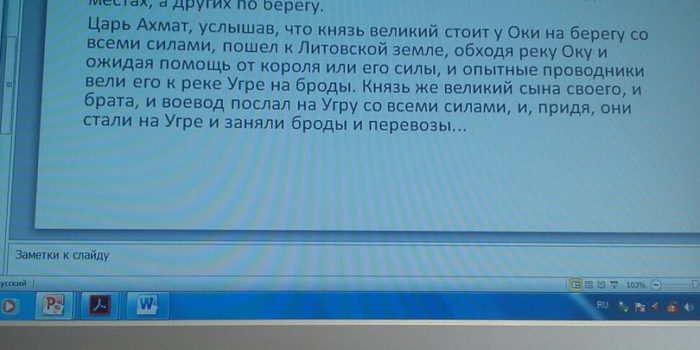Currently, distance learning technologies are becoming increasingly popular. And what are they?
Under the distance educational technology refers to educational technology, implemented mainly with the use of information and telecommunications networks with indirect (at a distance) interaction of students and teachers. It is most often built on an individual schedule.
All types of activities of trainees who are Internet users can be divided into three groups:
- search for information — work with browsers, databases, help systems, etc .;
- communication — e-mail, chat rooms, mailing lists, online forums, video conferencing, Skype, etc .;
- posting on the web — creating web pages, sites.
Consider how you can use these opportunities for the organization of educational activities of students. Search for information: Information search on the Internet can accompany such types of educational work as:
• writing essays,
• compiling annotated links,
• site review on the topic,
• work with web quests,
• search for «treasure»,
• collection of multimedia material to the topic,
• illustrating their texts with materials from the Internet;
Communication:
• virtual meetings,
• correspondence,
• discussion,
• role-playing games.
Online publishing:
• creating themed web pages, creating web quests,
• publication of final papers, articles, creation of thematic data banks,
• creating photo series and other multimedia resources.
Taking into account the technological capabilities of distance learning on the basis of the Internet, I use the following forms of education:
- lectures: television lectures, lectures via video conferencing, electronic conferences.
- consultations, individual and group (no more than 5–7 people at a time). I spend in real (chat, phone, Skype) and deferred (email, forum) time.
- seminars (group discussion by students of the curriculum subject under the guidance of a teacher). I implement it with the help of: video conferencing, chat, forum.
- Projects (group, individual research, creative, informational, technical base: all Internet services).
- Individual tasks (essays, essays, tasks, etc.).
- Control (online testing, exams, test; requires specialized software).
- Games. By the nature of the gaming techniques emit:
• Imitation games. Events, specific activities of people, as well as the situation, conditions in which an event occurs or an activity is carried out, can be imitated.
• Operational games. Help to work out the implementation of any specific operations (for example, to develop the skill of working with e-mail or using a search engine).
• Execution of roles. Practiced tactics of behavior, actions, the functions and duties of a particular person. A model is being developed — a play with a script, roles are distributed among the participants.
• «Business Theater». Played any situation, human behavior in this situation. The participant must mobilize all his experience, knowledge, skills, be able to get used to the image of a certain person, understand his actions, assess the situation and find the right course of action.
- Situational analysis (case study). The task of the situational analysis consists in a comprehensive study of the specific situation and an assessment of the effectiveness of the decisions made.
- chat sessions — training sessions, using chat technologies that are held simultaneously, all participants have simultaneous access to the chat.
- Web-based classes — distance learning, conferences, seminars, business games, laboratory work, workshops and other forms of training sessions conducted using telecommunications and other features of the world wide web.
Working on distance learning, I take into account the individual characteristics of students, published educational materials in electronic form on the educational platform.
Distance learning is conducted in the form of webinars, Skype classes, test assignments and assignments with a detailed answer on the training platform.
In working with students, I use new forms of presenting information that ensured the maximum degree of perception, namely: illustrations, audio materials, video lectures, additional tutorials, the ability to communicate with the teacher in the webinar room and via Skype.
In the form of distance learning, I carry out continuous monitoring of the learning process and level of training by testing; asking open-ended questions, the answer to which the student must answer in as much detail as possible for self-control; I conduct practical classes, together with students I write reports and essays; I conduct oral and written surveys. I provide training material to students.
Distance learning is available anywhere and anytime. It can be used as ancillary or basic options for the implementation of adapted programs in the education of persons with disabilities and persons with disabilities. The students themselves choose the intensity of their studies and they have the opportunity to be constantly in touch with the teacher, and individual counseling.
In distance learning, I used the following technologies:
- case technology — based on solving specific problems, tasks, they allow all students, including the teacher, to interact;
- network technologies (Internet technologies) — on the training platform, secure search, placement of information, photos, presentations, the ability to realize their projects are provided, mail, hypertext, telecommunication file transfers are used; instant messaging programs; student communication; the use of computer-based electronic educational programs and textbooks available to students on the training platform.
- telecommunications (information and satellite technology) — based on data transmission and broadcasting, global and local networks to provide access to information resources. It contains: e-mail, bulletin board, visual conferences, video and audio broadcasts, virtual seminars and discussions.
And now I will talk about how distance learning as a teacher has become part of my life. The idea to conduct remote classes came on April 24, 2015. At first it was just a photo of master classes in needlework, then text lectures and tasks.
On August 10, 2016, I created a learning channel and conducted the first introductory lesson on artistic embroidery live. After a few more lessons came out. The form of the broadcast is convenient in that you can reach a large audience. The only drawback here is that you cannot see the student working during the online broadcast. This is especially inconvenient for creative work.
In March 2017, I started conducting Skype classes in needlework and designing clothes. At that time, I had two students — a disabled girl from the Ivanovo region, and a mother of many children from St. Petersburg. By Skype, it is very convenient to do, because by conducting a lesson, you show the student what to do, he repeats it, and the teacher watches the assignment and corrects where necessary. This form of education is more effective than online broadcasting, the disadvantage in this case is a small reach of the target audience. The teacher has to explain the same topic several times, for each student separately.
After the meeting of the New Year 2018 until the summer, I had to leave to conduct remote classes, because of my departure. After returning, I resumed the work of distance learning. Video tutorials, training tests, student work, articles, lectures, charts and tables with terms and dates, master classes and other useful educational materials were added to the learning platform.
At the present time I am conducting distance learning on needlework, reading additional historical literature, history, social studies, world art culture, creativity lessons for children, the historical circle “Young Researcher”, and collective viewing of historical films.
The remote form of education is convenient for people living in remote areas, people with disabilities who are on maternity leave, with severe illness and in many other cases.
Some nowadays ask: «Can distance learning replace the real?» I would answer this question like this: “Although distance learning can reach a large audience, it cannot fully replace real learning. After all, the presence of students in the classroom next to the teacher, more alive. There is an opportunity to catch their eyes, while explaining the topic of the lesson. And when you pass by students along the corridor, they ask to help them with their homework, share their successes, failures and worries. I think that distance learning can exist in addition to the living, but it will never completely replace it. ”

